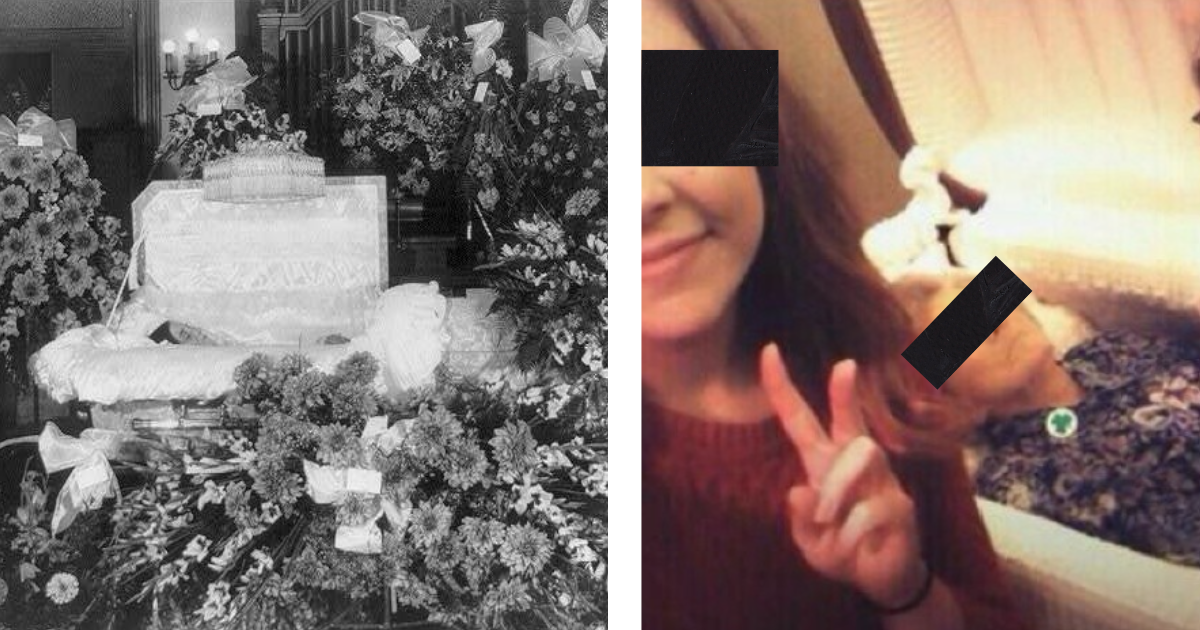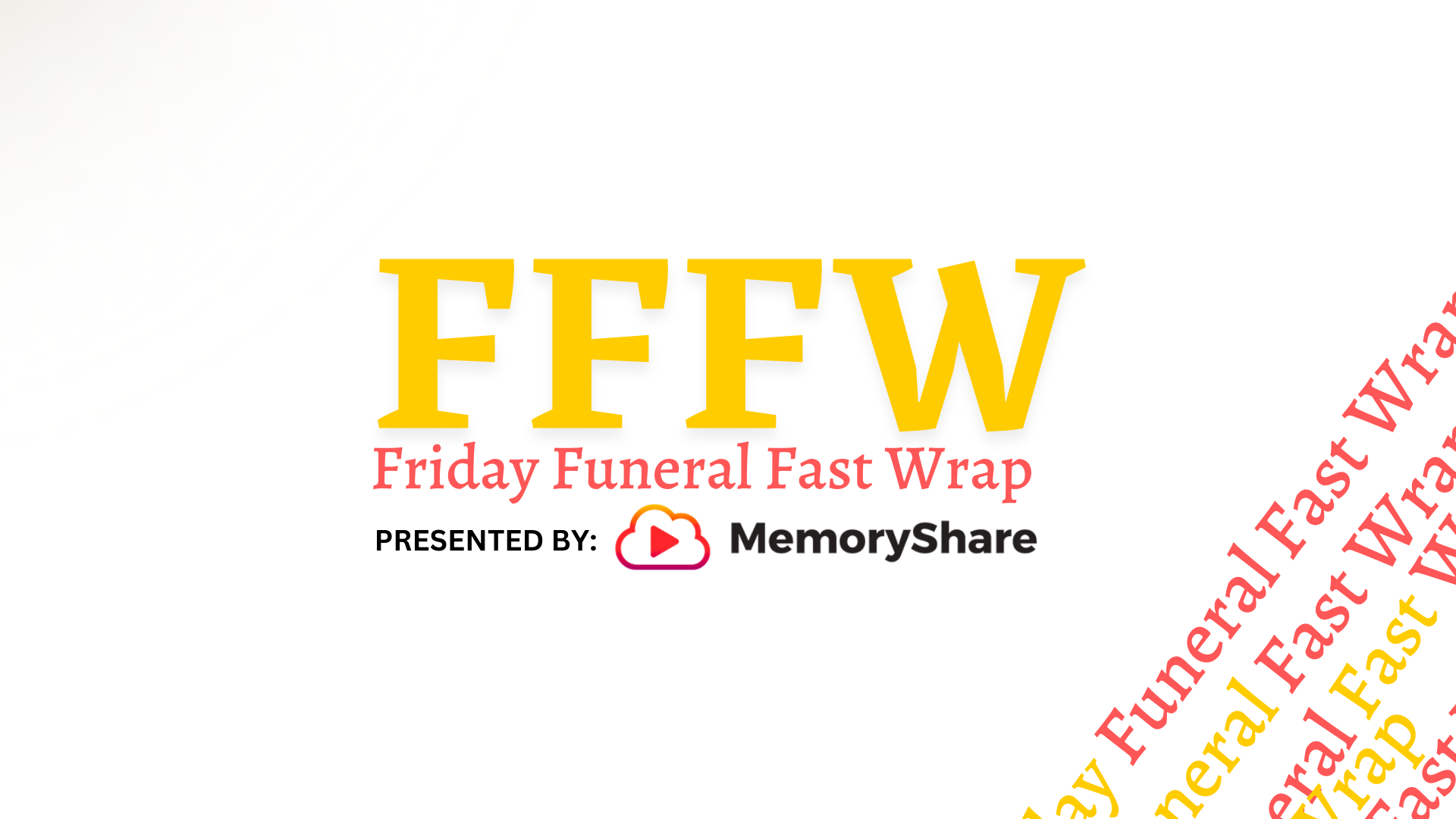Here’s Why There’s No Perfect Policy for Snapping Pics at Funerals
How many photos have you taken with your smartphone today? Well, if you’re an “average” American, you’ll go to bed tonight with approximately 20.2 more photos on your phone than you had when you woke up this morning. The convenience and quality output of the cameras on mobile devices (not to mention the irresistible urge to post pics to the socials on an hourly basis) means pretty much anything is fair game for a photo. And, like it or not, this includes photos being taken at funerals.
Plenty of firms have created policies about taking photos during visitations, funerals, graveside services, and cremations. Some even use strong language like “extremely poor taste” and “invasion of privacy” to deter the practice. Most of these guidelines stop short of spelling out potential penalties for disobedience, too, because, really, what are you going to do when the daughter who’s paying for the proceedings starts snapping selfies with the deceased?
Crafting a photo policy is a challenge — and enforcing one is even harder. There’s just no single right answer to what should be allowed (except selfies with the deceased — that’s a flat no) … but that doesn’t mean that the internet isn’t offering plenty of opinions. Here are just a few of the issues you might run into, and some feedback from both sides of the argument.
The gang’s all here
Like a wedding, a funeral often brings together family members and friends who haven’t seen one another since the last wedding or funeral. This might be the only opportunity to get a pic with that long-lost cousin or a group photo of the last remaining sorority sisters! But someone who has just tearfully shared a touching story about the deceased may not appreciate their red nose and streaky mascara being caught on camera. Others may not want to be memorialized in a photo that makes them recall a sad or traumatizing day. Should people be posing for pictures with other guests? And if one does take that pic, should they smile or look serious and somber?
YAY: “Not trying to be disrespectful, but a funeral or memorial isn’t all sadness and grief,” one responder posted to a Quora question on the topic. “Smiling in photos is fine as long as you want to smile. Being somber is also fine. For some families, this is the only time they ever get together. Celebrate what you can when you can.”
NAY: “No,” answered another person in the same post. “People are entitled to grieve without worrying about appearances. However discreet, it is a violation of privacy. It would be ok to say take pictures of the flowers or have the funeral stream for absentee family but from the point of view of a congregation member not showing mourners’ faces.”
Pics for posterity
This one’s tricky: Should anyone take photos of the deceased in the open casket? Thanks to your team’s care, grandma looks beautiful; why wouldn’t a family want to preserve her likeness for future generations? It wasn’t that long ago (ok, yes, it was the Victorian age, but still …) that families propped up their beloved deceased loved one for a family photo, as that may be the only image ever taken of that person.
YAY: “I took some of my Dad at his viewing,” wrote someone on the Ask a Funeral Director subreddit last year. “My family got there first so I did it before my sister and her family arrived so I didn’t creep them out. He looked so good, though, I had to do it. He’d been bed bound and sick for three years and they made him look like himself again. 💜 I was so relieved.”
ALSO YAY: “My grandmother has a collection of framed viewing photos of her closest family, like her sister and her husband. Those were so important for her to have,” wrote another respondent to the same Reddit thread.
NAY: A morning radio show shared this anecdote from a recent on-air discussion: “During the visitation, Morgan saw multiple different people over the course of these funerals take pictures of the deceased in their casket. She didn’t quite understand why someone would want to hold onto that type of memory, she prefers to remember those individuals when they were alive.”
ALSO NAY: “I took pictures of her lying peacefully in her casket and forwarded them on to my brother-in-law,” one woman wrote to an advice columnist last week. “I got a scathing email from my brother-in-law saying that he had specifically asked not to send pictures of her dead. He only wanted to remember her healthy.”
Leave it to the professionals?
Sometimes the question of whether photos should be taken at a funeral depends upon who’s holding the camera. Maybe it’s ok for a son to take a photo of his dad lying in state, but what do you do when the granddaughter’s coworker or a neighbor from 30 years ago pulls out their iPhone when they get to the casket? Some professional photographers have found success offering tasteful funeral photo packages (again, just like they do for weddings). So, does it matter who is taking photos, and why they’re doing it?
YAY: “I treasure the photos we have from my father’s funeral,” wrote a respondent to a question on a photography subreddit last year. “A sensitive photographer can capture tender moments between family members and friends who, in many cases, haven’t seen each other in years. Kudos to those who provide this service.”
NAY: “I was once asked by the parents [… of an …] 18 year old to take photos at the funeral,” someone shared on another subreddit. “[T]hey wanted photos of the hundreds of people that showed up, as a positive reminder ‘look how many friends he had’ kind of thing. […] It was the most awkward shooting I’ve ever done. I constantly felt like I should be explaining to everyone what I was doing and why, which I practically could not do.”
ALSO NAY: “I wished people would have not taken photos, every second of that time is etched in my brain,” wrote a mother on Quora about her 20-year-old firefighter son’s funeral. “I had to bite back anger when people ‘gifted’ me a collection or album of the day. I know it was an intention of kindness and I was as gracious as possible. But the whole thing left me very much against photos or video at funerals, period unless the family asks for someone to capture the event.”
It’s best to be prepared
Ultimately, most directors simply follow the family’s lead and respect their wishes on the subject, and every family will have a different take on what they think is ok. Some may think photos are fine as long as they don’t include the deceased, or only if they’re taken outside the viewing room, or if the person taking the photo is immediate family and/or asks permission. Photos may be ok for the funeral of one family member, but absolutely inappropriate for the services of another member of the same family.
You may choose to post your firm’s recommendations or guidelines on your website. These don’t have to be hard-and-fast rules with harsh penalties; as much as you might like to treat visitors like eighth-graders who have to put their devices in “phone jail” as they enter the classroom, that’s just not going to fly at the funeral home. Many funeral homes simply reiterate that photos should be taken only with the family’s permission. Others detail when picture-taking can seem most disrespectful, such as selfies with the deceased or using a flash or not disabling shutter sounds when taking photos during a service.
To avoid surprises (like your funeral home being tagged on Instagram alongside a face-swapped selfie with the deceased), the best practice would be to talk to the family about their preferences before the services and keep an eye out for folks who aren’t following the rules. You know better than anyone how to tactfully handle the situation.




